Encouraging your main rival to migrate to Ireland from Groningen, Holland, is an unorthodox method of eliminating your competition, but in Eltjo and Marion Van Der Laan’s instance, it worked.
In the cut-throat world of handcrafted furniture in a densely populated Dutch suburb, Ireland – with green fields, clean air, less competition, and where, crucially, trees grow in abundance – seemed idyllic to the couple.
Eltjo Van Der Laan took his rival’s advice. After unsuccessful trips to France and Scotland seeking a new base to continue furniture making, Eltjo and Marion arrived in Ireland.
The couple, who in 1980 were married about seven years, headed for Carrick-on-Shannon. It had been whispered that land was very affordable in Leitrim.
Eltjo had always dreamed of owning a castle, or at least a large country house with a courtyard. The auctioneer in Carrick-on-Shannon had just the place. To hook the Van Der Laans, he left them at the gates of Lawderdale House, forcing the couple to walk hand-in-hand up the 500-metre tree-lined avenue to the main residence.
“We were sold before we even reached the house,” Eltjo admits smiling.
He is now 63 years old and has been married to Marion for 44 of them. Eltjo’s father was a welder for a ship builder in Holland but that line of work was too dirty for Eltjo. He was drawn to the natural curves and smells of wood. When he left school at 14, he began an apprenticeship in a woodwork workshop. In his spare time, he fiddled about with a wood turning lathe at home in a small shed, putting together little ornaments and basic pieces of furniture.
He passionately studied his craft and his skills grew and thus his little shed became very busy. When he was spending more time in his own shed than at work, he decided to launch his own business. But laws in Holland restrict businesses to operating only in designated industrial zones and are accompanied by numerous stiff laws and regulations.
Because the couple viewed their business as somewhere between an artist and a commercial entity, they felt an industrial estate was not right to showcase their product – a change of scenery would be beneficial. Eltjo and Marion sealed the deal on the house of their dreams in two days.
“We were 27 years old and afraid of nothing,” said Eltjo. “I would have bought a castle with seven towers and gone bankrupt, but Marion kept my feet on the ground. We had two young children to think about too.”
The house itself is steeped in tradition. It was built in the 1600s by the Lawder family, massive landowners in the area at the time. The house was originally part of Parke’s Castle in Leitrim under the rule of the O’Rourkes.
“Every year, historians arrive to see the house and they tell me more things about the history of it,” says Eltjo, who, after some 35 years living in Leitrim, speaks with a mesmerising lilt, mixing his current parish with Groningen.
“In fact, the townland is called Mough and republicans would still refer to the house as Mough House.”
The house itself consists of some 6,000 square feet, which houses nine bedrooms. The back of the main residence is three storeys high (overlooked by a five-storey-high tower) and the walls are 3.5 feet thick. Plenty of converted stables and workshops surround a 90m2 courtyard – one of the main selling points of the house to the Van Der Laans.
“Straight away when we entered the courtyard, we could see our future workshop, our future showroom etc. We bought it in 1980 and moved in the next year. We had to put a new roof on the house and insulate it. One previous owner had wanted to convert the estate into a hotel, so the electrical wiring was all new but the water pipes were lead so they needed replacing. One other owner was American who installed a new kitchen but it wasn’t to our taste so we fitted a mixture of a traditional Irish and Dutch kitchen. When we restore, we try to stick to more traditional aesthetics.
“Before we moved here, we were very busy in Holland, to a point where we had companies working for us. It was our intention to take life a bit easier here. Business was sluggish once we moved but gradually took off.”
Accompanying Lawderdale House was some forest and as the business grew, Government incentives also grew and so did the size of Eltjo and Marion’s estate. They purchased large swathes of land and today several hundred acres of forest are under their care.
“The wood we use to make the furniture all comes from our estate but we bought it in initially,” explains Eltjo. “We make coffee tables, stools, dining room tables, bookcases, fireplaces, or bespoke pieces to fit a certain room.
“Every piece of furniture is hand-made – and it’s made as if it’s for my own house – it has to be perfect. We use machinery but it’s not computer operated, you have to guide it by hand. There’s quite a lot of sanding by hand and a lot of time is taken up by designing too. If you want a piece of furniture to last, come to us. People call into us all the time and get a feel for the wood we use. People see us stacking the timber to dry it out. I’m stacking timber today for use in four years, so people may have to be patient to get the exact piece of wood they want!”
Having survived the lean years in the 1980s, Eltjo and Marion’s business has gone through another tough period recently, one that it still has yet to emerge from.
“2016 has been the worst ever for sales. For the past three years I haven’t taken a wage from the business – I live off the returns from the forestry. Really, I’m just keeping the business ticking over. We used to sell two or three dining tables a week – now we’re selling one every couple of months. There was a time when I’d four or five people helping out but now it’s just me and Marion. My son Waldo helps out part-time when he can and our grandson Charlie, with his sweeping brush, helps keep the workshop tidy!
“We don’t do a lot of business by email – people call to see us in person. We have a Facebook page and brochures but really our business is mostly word of mouth.
“Taking everything into consideration, we’re extremely happy to keep going for a long time to come – we couldn’t see ourselves doing anything else.”
www.facebook.com/lawderdale/ CL
The finances behind growing forests
When the Van Der Laans migrated, some 33% of Holland was forested but just 1% of Ireland was covered. Now that figure is up to around 11%, mainly thanks to Government incentives to plant.
The Irish Farmers Association break it down like this: Each hectare of land can hold approximately 500 trees. With a reward, eventually, of about €50-€60 per tree, each hectare can earn a farmer €30,000. An 8ha plantation (the national average) at clear fell stage would have earned the farmer approximately €240,000.
Furniture
All kinds of furniture can be made to measure and order, but prices include:
• Chairs from €120• Dining room tables from €650• Coffee tables from €120• Side tables from €80• Stools from €35• Bookcases from €250• Dressers from €950
Types of trees
Sitka Spruce makes up approximately 75% of the Van Der Laan’s forest, which is the typical commercial crop. However, the Van Der Laans also grow about 10% red maple oak and Western Red Cedar to give their forests some lovely colour.
In his furniture, Eltjo uses some 20 different species of wood including yew (very rare), walnut, monkey puzzle, pine, oak, and ash.
Fireplaces are made with pine – oak would burst with the heat of the fire. Leg chairs are always made from ash because of their flexibility and strength, while Eltjo utilises 200-year-old pine in some tables.
Encouraging your main rival to migrate to Ireland from Groningen, Holland, is an unorthodox method of eliminating your competition, but in Eltjo and Marion Van Der Laan’s instance, it worked.
In the cut-throat world of handcrafted furniture in a densely populated Dutch suburb, Ireland – with green fields, clean air, less competition, and where, crucially, trees grow in abundance – seemed idyllic to the couple.
Eltjo Van Der Laan took his rival’s advice. After unsuccessful trips to France and Scotland seeking a new base to continue furniture making, Eltjo and Marion arrived in Ireland.
The couple, who in 1980 were married about seven years, headed for Carrick-on-Shannon. It had been whispered that land was very affordable in Leitrim.
Eltjo had always dreamed of owning a castle, or at least a large country house with a courtyard. The auctioneer in Carrick-on-Shannon had just the place. To hook the Van Der Laans, he left them at the gates of Lawderdale House, forcing the couple to walk hand-in-hand up the 500-metre tree-lined avenue to the main residence.
“We were sold before we even reached the house,” Eltjo admits smiling.
He is now 63 years old and has been married to Marion for 44 of them. Eltjo’s father was a welder for a ship builder in Holland but that line of work was too dirty for Eltjo. He was drawn to the natural curves and smells of wood. When he left school at 14, he began an apprenticeship in a woodwork workshop. In his spare time, he fiddled about with a wood turning lathe at home in a small shed, putting together little ornaments and basic pieces of furniture.
He passionately studied his craft and his skills grew and thus his little shed became very busy. When he was spending more time in his own shed than at work, he decided to launch his own business. But laws in Holland restrict businesses to operating only in designated industrial zones and are accompanied by numerous stiff laws and regulations.
Because the couple viewed their business as somewhere between an artist and a commercial entity, they felt an industrial estate was not right to showcase their product – a change of scenery would be beneficial. Eltjo and Marion sealed the deal on the house of their dreams in two days.
“We were 27 years old and afraid of nothing,” said Eltjo. “I would have bought a castle with seven towers and gone bankrupt, but Marion kept my feet on the ground. We had two young children to think about too.”
The house itself is steeped in tradition. It was built in the 1600s by the Lawder family, massive landowners in the area at the time. The house was originally part of Parke’s Castle in Leitrim under the rule of the O’Rourkes.
“Every year, historians arrive to see the house and they tell me more things about the history of it,” says Eltjo, who, after some 35 years living in Leitrim, speaks with a mesmerising lilt, mixing his current parish with Groningen.
“In fact, the townland is called Mough and republicans would still refer to the house as Mough House.”
The house itself consists of some 6,000 square feet, which houses nine bedrooms. The back of the main residence is three storeys high (overlooked by a five-storey-high tower) and the walls are 3.5 feet thick. Plenty of converted stables and workshops surround a 90m2 courtyard – one of the main selling points of the house to the Van Der Laans.
“Straight away when we entered the courtyard, we could see our future workshop, our future showroom etc. We bought it in 1980 and moved in the next year. We had to put a new roof on the house and insulate it. One previous owner had wanted to convert the estate into a hotel, so the electrical wiring was all new but the water pipes were lead so they needed replacing. One other owner was American who installed a new kitchen but it wasn’t to our taste so we fitted a mixture of a traditional Irish and Dutch kitchen. When we restore, we try to stick to more traditional aesthetics.
“Before we moved here, we were very busy in Holland, to a point where we had companies working for us. It was our intention to take life a bit easier here. Business was sluggish once we moved but gradually took off.”
Accompanying Lawderdale House was some forest and as the business grew, Government incentives also grew and so did the size of Eltjo and Marion’s estate. They purchased large swathes of land and today several hundred acres of forest are under their care.
“The wood we use to make the furniture all comes from our estate but we bought it in initially,” explains Eltjo. “We make coffee tables, stools, dining room tables, bookcases, fireplaces, or bespoke pieces to fit a certain room.
“Every piece of furniture is hand-made – and it’s made as if it’s for my own house – it has to be perfect. We use machinery but it’s not computer operated, you have to guide it by hand. There’s quite a lot of sanding by hand and a lot of time is taken up by designing too. If you want a piece of furniture to last, come to us. People call into us all the time and get a feel for the wood we use. People see us stacking the timber to dry it out. I’m stacking timber today for use in four years, so people may have to be patient to get the exact piece of wood they want!”
Having survived the lean years in the 1980s, Eltjo and Marion’s business has gone through another tough period recently, one that it still has yet to emerge from.
“2016 has been the worst ever for sales. For the past three years I haven’t taken a wage from the business – I live off the returns from the forestry. Really, I’m just keeping the business ticking over. We used to sell two or three dining tables a week – now we’re selling one every couple of months. There was a time when I’d four or five people helping out but now it’s just me and Marion. My son Waldo helps out part-time when he can and our grandson Charlie, with his sweeping brush, helps keep the workshop tidy!
“We don’t do a lot of business by email – people call to see us in person. We have a Facebook page and brochures but really our business is mostly word of mouth.
“Taking everything into consideration, we’re extremely happy to keep going for a long time to come – we couldn’t see ourselves doing anything else.”
www.facebook.com/lawderdale/ CL
The finances behind growing forests
When the Van Der Laans migrated, some 33% of Holland was forested but just 1% of Ireland was covered. Now that figure is up to around 11%, mainly thanks to Government incentives to plant.
The Irish Farmers Association break it down like this: Each hectare of land can hold approximately 500 trees. With a reward, eventually, of about €50-€60 per tree, each hectare can earn a farmer €30,000. An 8ha plantation (the national average) at clear fell stage would have earned the farmer approximately €240,000.
Furniture
All kinds of furniture can be made to measure and order, but prices include:
• Chairs from €120• Dining room tables from €650• Coffee tables from €120• Side tables from €80• Stools from €35• Bookcases from €250• Dressers from €950
Types of trees
Sitka Spruce makes up approximately 75% of the Van Der Laan’s forest, which is the typical commercial crop. However, the Van Der Laans also grow about 10% red maple oak and Western Red Cedar to give their forests some lovely colour.
In his furniture, Eltjo uses some 20 different species of wood including yew (very rare), walnut, monkey puzzle, pine, oak, and ash.
Fireplaces are made with pine – oak would burst with the heat of the fire. Leg chairs are always made from ash because of their flexibility and strength, while Eltjo utilises 200-year-old pine in some tables.

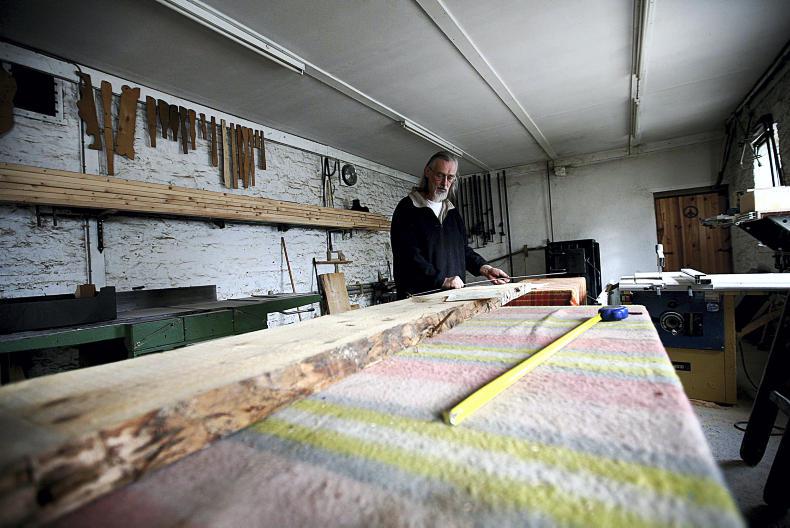




 This is a subscriber-only article
This is a subscriber-only article










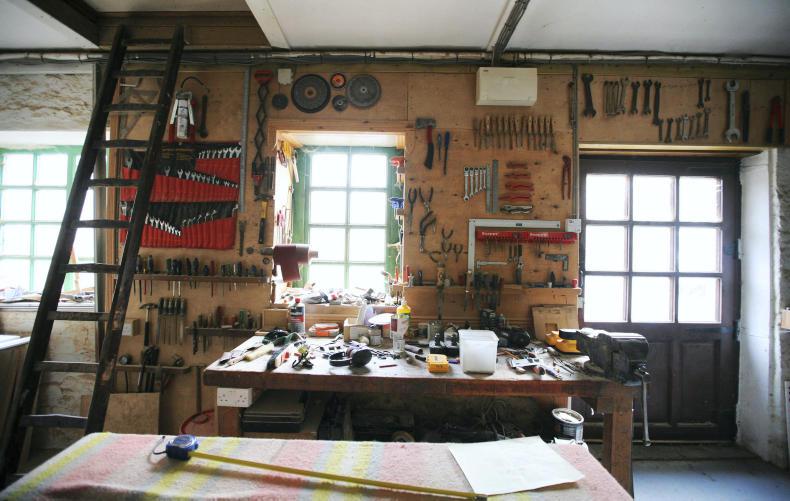
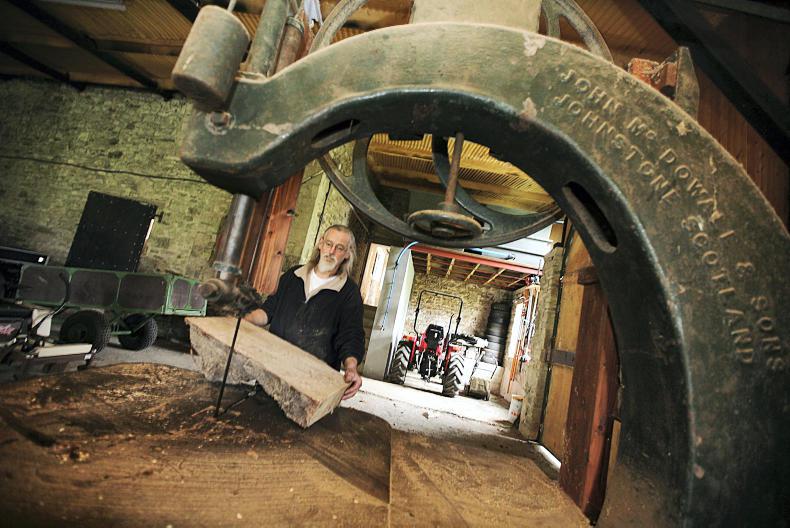
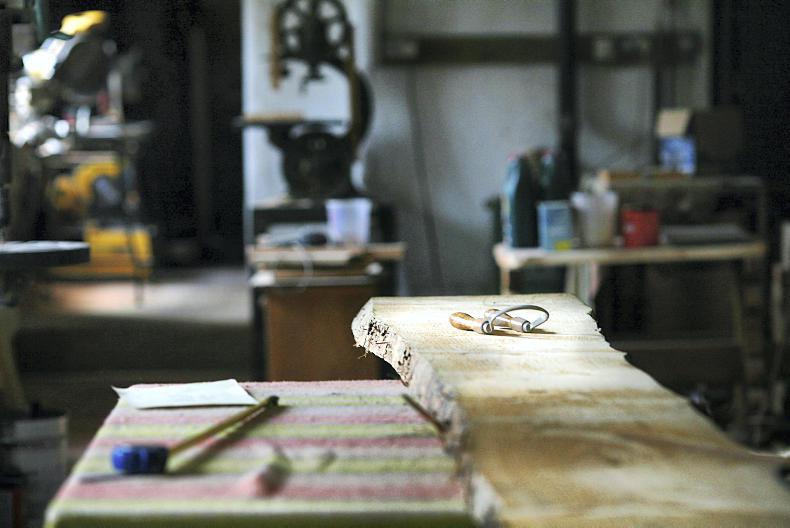
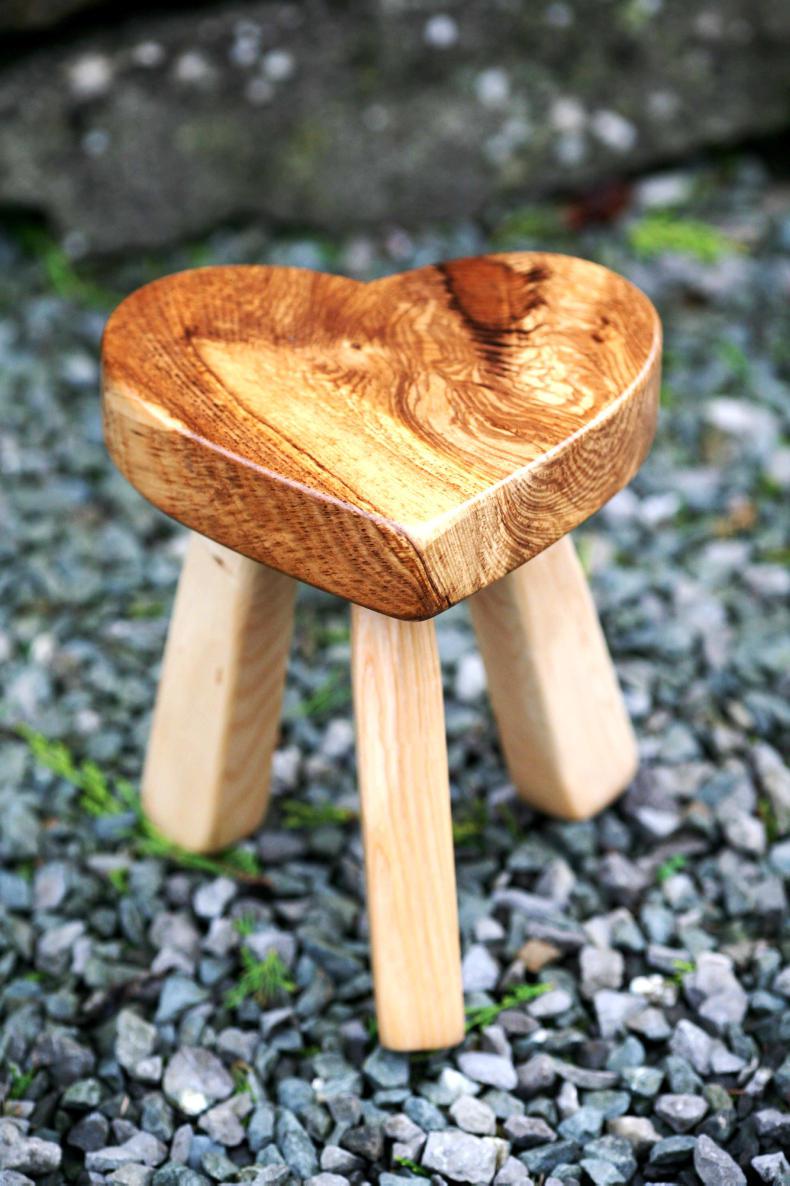

SHARING OPTIONS: